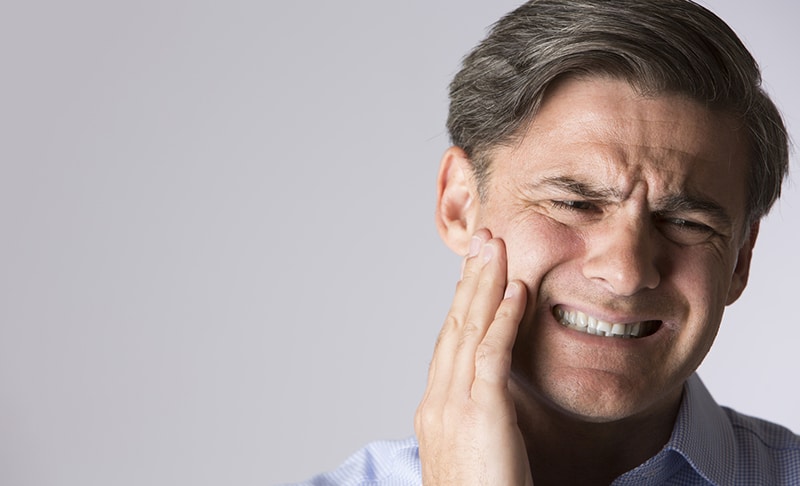TMJ Symptoms
TMJ (temporomandibular joint disorders) is not a well-known condition, and many people have difficulty recognizing the symptoms. That’s partly because the symptoms of this disorder can be various and may manifest far from their source. Among the common TMJ symptoms to look for are:
- Jaw pain
- Headaches
- Sounds like popping or clicking
- Irregular motion, including locked jaw
- Chipped, broken, crooked, or worn teeth
- Tinnitus (ringing in the ears)
- Dizziness or vertigo
- Ear pain or fullness
- Neck pain
- Upper back pain
- Tingling or numbness in the fingers
Less commonly, TMJ may manifest with other symptoms. If you have two of the symptoms above and other symptoms not listed here, you may have a TMJ disorder. Please call (585) 244-3337 to ask.
TMJ Diagnosis
But symptoms only tell us that you might have TMJ. To ensure that you have the condition before we start TMJ treatment, we will use a comprehensive approach to diagnosis. First, we will start with a medical history, asking about other potential symptoms as well as conditions that might be similar to TMJ. (TMJ is sometimes called “the great imposter” because it mimics many other conditions.)
Then we will do a physical exam, including to see if you have difficulty opening or closing your jaw along with checking your range of motion. We will feel the joint and jaw muscles to see if we can figure out what’s going on. We will identify facial pain, the motion of your jaw, and other aspects of TMJ. We may then perform a treatment with transcutaneous electrical nerve stimulation (TENS), a kind of electric massage that can relax jaw muscles and make it easier to diagnose TMJ.
Then we will perform a number of diagnostic tests to determine the extent of TMJ. Computerized jaw tracking will let us figure out exactly how your it is moving so that we can identify the exact problems with the motion. Then we will listen to the jaw joint to try to correlate the sound with the motion. Amplified sound will give us more information about what’s going on in the joint itself, including whether there’s likely any grinding of bone.
To confirm the state of your bones, we can use cone beam CT scan, which gives us detailed 3D pictures of your bones. Once we know about how far along your TMJ has developed, we can recommend TMJ treatment appropriate to your condition.

TMJ Treatment Options
There are many different options to TMJ treatment to help relieve pain. As with other approaches, we like to begin with the least invasive treatment options. For some people, TMJ treatment may consist of periodic uses of the TENS machine. By keeping this joint relaxed, we can avoid the muscle tension that causes many orofacial pain and headaches. It will also protect your teeth and restorations from damage.
But for some people, just TENS treatments won’t keep you relaxed. You might need an oral splint mouth guard to help hold your jaw in a more relaxed position. This keeps your jaw muscles from developing tension, and should resolve most if not all your TMJ symptoms. You will probably start out wearing the splint all day, but later may only need to wear it at night.
Some people like the results they get from TMJ treatment with a splint but not the splint itself. They want to use dental restorations to help achieve a stable, comfortable bite. This is a TMJ treatment option we will discuss after we have proven results with your bite splint.
In some cases, surgery might be recommended as a TMJ treatment after all other options have been exhausted. TMJ surgery is not recommended as a frontline treatment.
To learn whether you could benefit from TMJ treatment in Rochester, please call (585) 244-3337 or email us for an appointment at Contemporary Dentistry today.
